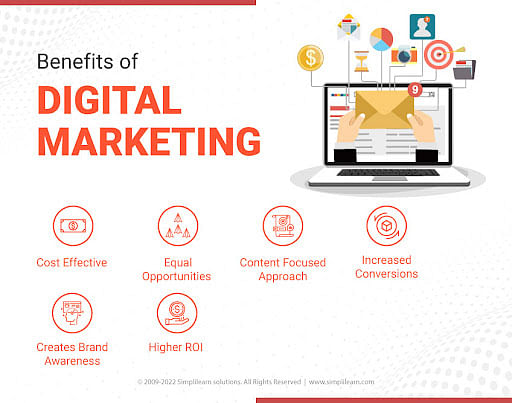Enhance Individual Experience and Drive Website Traffic With Responsive Internet Design
In today's electronic landscape, where customers are accessing sites from a multitude of tools, responsive internet design has actually ended up being much more vital than ever. With its ability to adjust and flawlessly readjust to various screen sizes, receptive design not only improves user experience but likewise drives web traffic to your website.
Why Receptive Internet Layout Issues
Responsive web design is an important element of contemporary web growth because of its capability to guarantee optimum user experience across different gadgets and screen dimensions. With the spreading of smart devices, tablet computers, and various other mobile phones, it has come to be critical for web sites to adapt and provide seamless functionality no matter of the tool being utilized.
The primary reason that receptive website design issues is that it permits users to have a satisfying and consistent browsing experience, despite the tool they are utilizing. A responsive internet site immediately changes its style, material, and format elements to fit the display size and resolution of the tool, guaranteeing that users can conveniently navigate and communicate with the web site with no hassle or stress.
Furthermore, receptive web design additionally plays a considerable duty in search engine optimization (SEO) Online search engine, such as Google, focus on sites that are receptive and mobile-friendly in their search outcomes. By incorporating receptive design concepts, internet sites can enhance their visibility and ranking, resulting in increased natural website traffic and possible clients.

Boosting Customer Interaction With Responsive Layout
Optimizing individual engagement is a key goal of receptive layout, as it makes certain that users can easily access and connect with web site material on any kind of gadget. With the raising use tablets and mobile phones, it is important for websites to adapt to various screen dimensions and resolutions. Responsive design enables websites to automatically readjust their design and content to offer a seamless customer experience across devices.
Among the main methods receptive design increases customer interaction is by lowering load times. With a receptive internet site, individuals do not have to wait for separate mobile variations to tons, resulting in quicker access to web content. This enhanced speed causes higher individual satisfaction and encourages them to spend more time on the site.
Additionally, responsive design improves customer engagement by enhancing navigation and interface (The Ad Firm). When an internet site is developed responsively, buttons and menus are optimized for touch communications, making it much easier for users to browse and interact with the site on their mobile devices. This user-friendly and straightforward experience keeps individuals involved and motivates them to check out even more of the website
Additionally, receptive layout enables much better material visibility and readability. By adjusting the layout and font sizes to different tools, receptive websites make sure that customers can easily recognize the content and read. This improves individual interaction by lowering the demand for zooming or scrolling to check out the message.
Enhancing Website Website Traffic With Responsive Web Design
With the expanding popularity of mobile gadgets, having a web site that is receptive to different display sizes and resolutions is vital for driving increased traffic. In today's digital landscape, users are accessing web sites from a variety of devices such as mobile phones, tablets, and home computer. Each of these tools has various display link dimensions and resolutions, and if your internet site is not developed to adjust to these variations, it can bring about a bad user experience and a loss of possible website traffic.
Responsive internet style ensures that your website looks and operates ideally throughout all tools. By using adaptable grids, fluid images, and media inquiries, receptive style enables your web site to immediately readjust its layout, material, and navigation to fit any type of screen size. This suggests that customers will have a smooth surfing experience no matter whether they are using a huge desktop computer or a tiny smartphone computer system.
Crucial Element of Efficient Receptive Design
Efficient receptive design integrates numerous crucial components that guarantee a smooth customer experience across different devices. Among these elements is flexible grids and formats. By using loved one devices like percentages as opposed to taken care of units like pixels, designers can produce layouts that scale and adjust to fit different screen sizes. This permits content to be displayed in a readable and aesthetically enticing way on any gadget.
Another vital element is media inquiries. These permit developers to apply various styles and formats based upon the attributes of the customer's device, such as display dimension and orientation. By utilizing media inquiries, designers can enhance the presentation of material for each and every device, making sure that it is understandable and quickly accessible.
Responsive photos are additionally essential in effective responsive layout. Pictures that are too large can slow down page lots times on smart phones, while photos that are too small may appear pixelated on bigger displays. By making use of methods such as receptive image resizing and careless loading, developers can make certain that pictures are properly sized and optimized for each and every device.
Lastly, effective responsive design involves a mobile-first technique. This implies focusing on and developing material for mobile devices initially, and after that enhancing the style and expanding for bigger displays. This technique ensures that one of the most essential content is conveniently obtainable on smaller displays, while still offering a rich experience on larger devices.
Ideal Practices for Implementing Receptive Internet Style
Applying receptive website design needs careful consideration of numerous ideal practices to guarantee an optimum user experience throughout different devices. Here are some crucial ideal practices to follow when carrying out receptive website design.
To start with, it is critical to prioritize mobile users. With the raising dominance graphic design portfolio of smart phones, developing for mobile-first has ended up being essential. Start by creating for smaller sized displays and afterwards considerably improve the layout for bigger displays.

Another crucial best technique is to enhance images for different screen resolutions. Big pictures can decrease the packing visit this site right here time of your website, specifically on smart phones with slower connections. Usage responsive images that can be resized based on the gadget's display resolution to enhance performance.
In addition, test your internet site on different tools and display sizes to make sure a consistent and seamless experience. There are numerous screening tools available that can help you identify any kind of problems and make essential adjustments.
Last but not least, focus on use and ease of access. Make sure that your website is easy to navigate, with succinct and clear content. See to it that your site comes to people with disabilities and complies with availability guidelines.
Verdict
In conclusion, responsive website design plays an important role in boosting individual experience and driving traffic to websites. By embracing responsive style principles, sites can guarantee optimal viewing experiences across different tools, bring about boosted customer involvement (The Ad Firm Web Design). Furthermore, receptive design can additionally contribute to greater site web traffic as it improves internet search engine positions and facilitates simple sharing of web content. As a result, organizations must concentrate on applying the vital elements and best practices of responsive style to efficiently satisfy the needs of modern users.
Maximizing customer interaction is an essential goal of receptive design, as it makes sure that customers can easily gain access to and communicate with internet site content on any kind of tool. Receptive layout enables internet sites to automatically change their format and content to supply a seamless individual experience across devices.
Furthermore, responsive layout improves individual involvement by enhancing navigation and user interface.Receptive pictures are likewise critical in efficient receptive design. By adopting receptive style principles, internet sites can ensure ideal checking out experiences across various devices, leading to increased customer engagement.